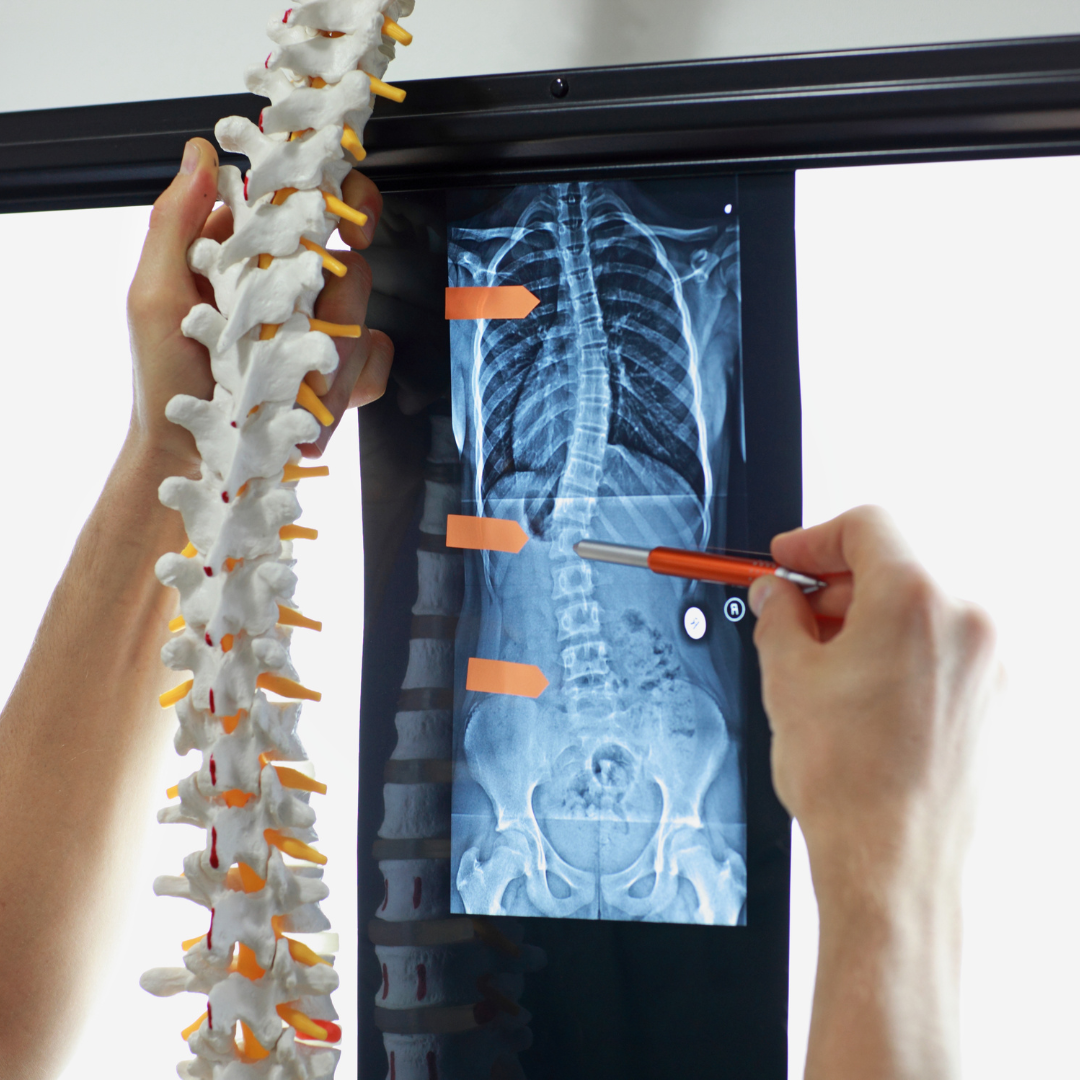
Scoliosis, a condition defined by an abnormal sideways curvature of the spine, affects millions of people worldwide. At Iowa Ortho, our goal is to provide expert care and education for patients living with scoliosis. In this article, we’ll walk you through the causes, symptoms, diagnosis, and treatment options to help you better understand and manage this spinal condition.
What Is Scoliosis?
Scoliosis occurs when the spine curves sideways in a “C” or “S” shape. This curvature can develop in different areas of the spine, such as the thoracic (upper back) or lumbar (lower back) regions—or both. While mild cases may go unnoticed, moderate to severe scoliosis can cause pain, posture issues, and even respiratory complications if left untreated.
What Causes Scoliosis?
Scoliosis is often classified as idiopathic, meaning the cause is unknown. However, several factors can influence its development:
- Genetics – Family history can increase the risk of scoliosis.
- Neuromuscular Conditions – Disorders like cerebral palsy or muscular dystrophy may lead to spinal curvatures.
- Congenital Scoliosis – Caused by spinal malformations present at birth.
- Degenerative Scoliosis – Common in adults due to aging, spinal disc wear, and joint degeneration.
Common Symptoms of Scoliosis
Symptoms can vary depending on the severity and location of the curve. Some of the most recognizable signs include:
- Uneven shoulders or hips
- One shoulder blade more prominent than the other
- Tilted or uneven waist
- Leaning to one side when standing
- Persistent back pain (especially in adults)
- In advanced cases: breathing or heart issues
If you or your child exhibit any of these symptoms, early diagnosis is essential for effective management.
How Scoliosis Is Diagnosed at Iowa Ortho
Our team uses both physical exams and imaging to diagnose scoliosis:
- Adam’s Forward Bend Test: A simple, in-office screening where the patient bends forward, allowing us to observe any spine asymmetry.
- X-rays, MRI, or CT scans: These provide detailed images of the spine, helping our specialists measure the curve’s degree and plan treatment accordingly.
Scoliosis Treatment Options
Treatment depends on the curve’s severity, the patient’s age, and the rate of progression. At Iowa Ortho, we offer several nonsurgical options:
1. Observation
Mild scoliosis may only need periodic monitoring—especially in growing children—to track any changes.
2. Bracing
For moderate scoliosis in children, bracing can slow or stop the curve’s progression. Braces must be worn as prescribed for maximum effectiveness.
3. Physical Therapy
Targeted exercises and rehabilitation programs can improve posture, strengthen spinal muscles, and reduce pain.
🔍 Note: For cases requiring surgery, Iowa Ortho does not currently offer surgical scoliosis correction, but we are happy to refer patients to trusted specialists in the area.
Living Well with Scoliosis
Living with scoliosis may feel overwhelming at times, but with the right care plan and support system, most patients can maintain an active, fulfilling lifestyle. At Iowa Ortho, we take a comprehensive approach—addressing physical health while supporting emotional well-being through education and awareness.
Get Expert Scoliosis Care at Iowa Ortho
Whether you’ve just been diagnosed or are seeking better management options, Iowa Ortho is here for you. Our experienced team offers personalized care plans for scoliosis and other spinal conditions.
Call 515-247-8400 or schedule an appointment online to consult with a spine specialist.
With Iowa Ortho by your side, you’re not alone on your journey to better spinal health.
